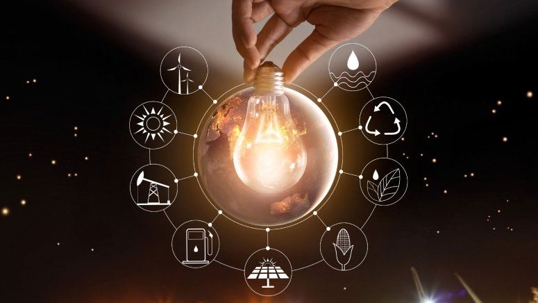Are You Ready to Go Green via Electrification?
The electrification movement, the shift from fossil fuels to more renewable energy sources, is gaining popularity all over the country. Many homeowners are calling their local electricians to learn more about what is involved in switching to electricity, saving money, and protecting the environment.
Read on to learn more about what’s involved in making the switch to whole-house electrification.
Electrification Defined
“Electrification” is one of the new buzzwords around the neighborhood, and more homeowners are exploring their options to join the electrification movement. The primary tenant of this movement is using power sources, appliances, and other devices that run on electricity as opposed to fossil fuels.
While electrification seems like a new thing, it has actually been around for decades. It was not until more recently that electrification became a household term. From 1950 to 2018, electrically powered products increased in power and decreased in size and price. Today, roughly one-quarter of homes in the entire country is entirely electric.
Why Make the Move?
There are plenty of reasons why homeowners are moving to renewable energy sources and going green. For some, the most significant reason to join the electrification movement is to help reduce carbon emissions and combat climate change. For others, electrification means a better economy and more jobs. For example, the Transition to All-Electric Buildings project in California aims to create over 100,000 full-time careers, and experts believe this movement could lead to over 25 million jobs.
Joining the electrification movement is not just about macro issues like climate change and the economy; home and business owners can also increase efficiency and convenience throughout their properties, not to mention the cost savings of relying on renewable energies. According to the National Resources Defense Council (NRDC), electrified homes save an average of $130 to $540 annually across the country. Those savings can be multiplied exponentially in regions with ideal conditions and access to new technologies, like California.
There are also subtle benefits to electrifying your home. For example, you will enjoy a reduction in indoor pollutants like carbon monoxide and nitrogen dioxide. Gas stoves, in fact, can have up to 400% higher nitrogen dioxide levels than electric stoves. Gas stoves can lead to lung irritation, asthma, and other respiratory issues. Something as simple as switching to an electric stove can eliminate your home from this potentially harmful pollutant.
The Cost of Electrification
Most homeowners love the idea of saving money on their utility bills, breathing fresher air inside, and positively impacting the environment. The challenge for most is the cost. For people building brand-new homes, going electric is not as prohibitive. An existing home requires more work, which means a higher price. The City and Count County of San Francisco Board of Supervisors estimates that a complete electrification upgrade can cost between $14,363 and $34,790.
Luckily, homeowners do not have to take on these costs on their own. Numerous local, county, and state programs help offset the costs of electrical upgrades via tax rebates. There are also federal programs in place that can help. For example, President Biden recently signed the Inflation Reduction Act (IRA), which focuses on renewable energy initiatives.
Under the IRA, homeowners can earn an instant rebate of up to $7,500 for purchasing a new electric vehicle and up to $4,000 for a used EV. You can also earn a tax rebate of 30% of the cost of buying and installing an at-home electric vehicle charging station, up to $1,000. The IRA offers rebates to go solar, upgrade your electrical panel, switch to electric appliances, and more. These tax savings can significantly help offset the cost of electrical improvements to your home.
How to Make the Switch
Joining the electrification movement requires planning. It may not be enough to simply purchase new appliances if your home’s electrical grid cannot handle new demands. Rewiring America created a helpful checklist to help homeowners better understand what is involved in electrification. Of course, the most straightforward way to plan is to contact a local electrician specializing in electrification upgrades. You can arrange to make gradual changes to your home in an order that is cost-effective and practical.
Most electrification upgrades start with your service panel. Older homes often have simple breaker boxes that cannot handle the needs of an updated home. You want an electrical panel that offers at least 100 amps, but a larger box is often preferred. Many homeowners are going with smart electrical panels that add convenience to monitor and control electrical usage.
Once your home’s electrical grid is up to par, you can make additional improvements based on your wants and needs. Some electrical appliances and EV chargers require dedicated lines, so you may need an electrician to add new lines or extend existing lines throughout your home. From there, what is involved in your electrification project depends on which upgrades you make. For example, you may want to hire a plumber to install a hybrid or electric water heater, an HVAC tech for your new electric heat pump, or an electrician to add energy storage/backup batteries to your home.
Let Watson’s Charging Stations & Electric Be Your Guide
Joining the electrification movement may seem overwhelming, but it does not have to be a complicated process. While this kind of project is not a DIY gig, you have help. The electricians at Watson’s Charging Stations & Electric are pioneers in electrification across Gilroy, CA, and the Santa Clara Valley. We have been helping home and business owners with their electrification needs for years. We are happy to help with every stage of your move to electric, from pre-planning to appliance selection, completing the upgrades creating a maintenance plan, and more.
Give us a call today for your complimentary consultation. We can give you insight into what is specifically involved in your electrical project.

